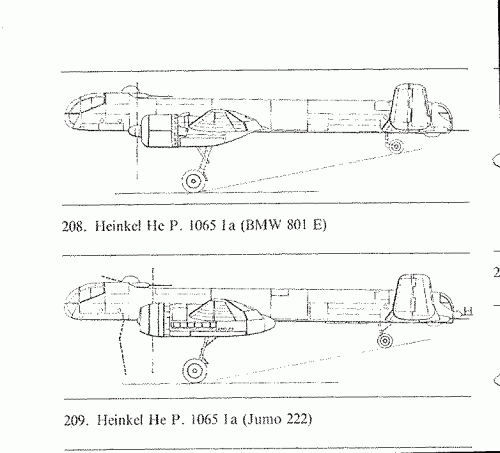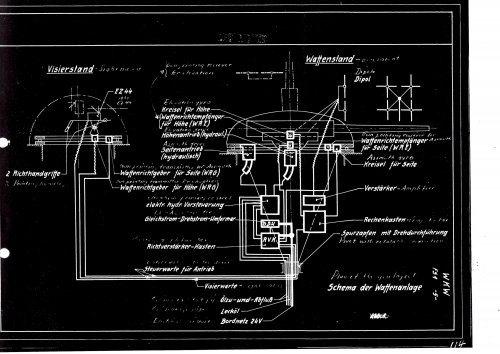In CIOS File report XXX-118", Radio & Radar Research Establishments of the German Services Ministries", page 33, we can know that the british AGLT "Village Inn" was captured and "quite efficiently" analised by FFO, most probably the best scientific institution devoted to airborne electronics in Germany, by the end of 1944. I recall the americans were quite surprised to know that FFO had understood and started to jam the "Loran" navigation system within two weeks.
In the same report, page 58, a Dr. Krüger from the TAL (Technische Akademie der Luftwaffe) in Bad Blankenburg, when interrogated by allied officers said he had worked with AGLT using first yagi aerials, later changing to dieletric antennae.
The Heinkel P.1061 Ia with Jumo 222 above seems to have a radar similar to the Pauke-A, but please see this image, taken from US Naval Technical Mission in Europe, Technical Report 349-45, German Aicraft Armament - Turrets & Remote Control Mounts
It shows a set of yagi antennae, coupled to the remote control mount. The contents relate to Rheinmetall-Borsig, unfortunatelly not taking in consideration the electronic part of the subsystem, but it should be a range only radar, used in conjunction with the EZ44 gyro sight, which it fed.
According Leo Brandt the germans were working at the 1st of July of 1944 in the "Schwenk-Pauke", a centimetric (3,1-3,2 cm) gun-laying radar for swiveling gun mounts, a work undertaken by Telefunken and Loewe-Opta. They had under study the use of auto-tracking coupled to a computer (AEG, LGW and FFO) and, at the same date, were considering using PPI screens to allocate targets to battle stations, e.g. in a heavy bomber.
Finally, the Heckenrose, a tail radar controlling rear gun mounts. I recall a post-war report by Brunolf Baade stating the Heckenrose was a Junkers idea, but we can see it in other companies projects as well. Leo Brandt also mentions it, not as a radar per se but as the installations name.
 ,
,

